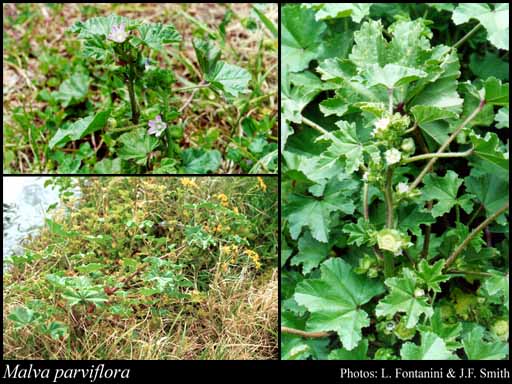- Reference
- Demonstr.Pl. 18-19 (1753)
- Conservation Code
- Not threatened
- Naturalised Status
- Alien to Western Australia
- Name Status
- Current
Erect or decumbent annual or perennial, herb, 0.05-1.2 m high. Fl. blue-purple/pink/white, Mar or Jul to Nov. Sandy & clayey soils. Disturbed areas.

Distribution
- IBRA Regions
- Avon Wheatbelt, Coolgardie, Esperance Plains, Gascoyne, Geraldton Sandplains, Jarrah Forest, Mallee, Murchison, Nullarbor, Swan Coastal Plain, Victoria Bonaparte, Warren, Yalgoo.
- IBRA Subregions
- Augustus, Carlisle, Eastern Goldfield, Eastern Murchison, Edel, Fitzgerald, Geraldton Hills, Katanning, Keep, Merredin, Perth, Southern Cross, Southern Jarrah Forest, Tallering, Warren, Western Mallee, Western Murchison.
- IMCRA Regions
- Abrolhos Islands, Central West Coast, Leeuwin-Naturaliste, WA South Coast.
- Local Government Areas (LGAs)
- Albany, Bruce Rock, Busselton, Cockburn, Coolgardie, Cue, Dowerin, Dundas, Fremantle, Greater Geraldton, Irwin, Jerramungup, Kalgoorlie-Boulder, Kent, Kondinin, Kulin, Lake Grace, Manjimup, Meekatharra, Melville, Mingenew, Murchison, Narembeen, Narrogin, Northampton, Perth, Ravensthorpe, Rockingham, Shark Bay, Stirling, Swan, Upper Gascoyne, Wickepin, Wiluna, Wyndham-East Kimberley, Yalgoo, Yilgarn, York.
Management Notes (for the Swan NRM Region)
Alternative Names. Cheeseweed, Marshmallow, Egyptian Mallow, Little Mallow.
General Biology. Growth form. Herb. Life form. Annual. Reproduction. Seed. Dispersal. Soil, water, agricultural livestock. Toxicity. Can be poisonous to mammals. Seedbank persistence. Possibly up to 100 years.
Notes. Occupies high-light habitats and tends to increase as soil fertility increases. Able to flower and set seed within 2 months of germinating. Has a long flowering period and high seed set. Has a single long taproot allowing it to survive long periods of drought. Fresh seed has high levels of innate dormancy. Germinates in spring to autumn and grows rapidly. Spring germinating plants may flower when only a few centimetres high and survive over summer to become biennial. Germination is moderately sensitive to salt stress, and is not influenced by light but is stimulated by scarification. Morphologically variable between geographical locations. Plants growing in wamer areas have longer growth periods and higher maximum plant height compared to cool regions. Acts as a host for many pests and dieases, including viruses, fungus and nematodes. Anecdotal evidence suggests it solar tracks, which could increase the annual carbon gain by as much as 25%. This may help to account for the success of this species as a weed in many locations worldwide.
Additional information. Origin. Northern Africa, Arabian Peninsula, Western Asia, Southeastern and Southwestern Europe. History of use/introduction. Ornamental, medicines, food. Similar exotic species. Malva nicaeensis. Similar native species. M. preissiana.
Suggested method of management and control. Hand remove isolated plants. Chemical control is only effective at early growth stages, it is naturally tolerant to glyphosate and difficult to control due to substantial taproot. Able to regrow after cutting or defloiation, although plants may be killed if the tap root is cut below the crown. Weed control measures carried out after flowering are unlikely to prevent viable seeds entering the soil seed bank. Read the manufacturers' labels and material safety data sheets before using herbicides. For further information consult the Australian Pesticides and Veterinary Medicines Authority to determine the status of permits for your situation or state.
Management Calendar
| Calendar Type | Jan | Feb | Mar | Apr | May | Jun | Jul | Aug | Sep | Oct | Nov | Dec | Comments |
|---|---|---|---|---|---|---|---|---|---|---|---|---|---|
| Germination | O | O | O | Y | Y | Y | Y | Y | O | O | O | O | |
| Active Growth | Y | Y | Y | Y | Y | Y | |||||||
| Flowering | O | O | O | O | Y | Y | Y | Y | Y | O | |||
| Fruiting | Y | Y | O | ||||||||||
| Manual Removal | Y | Y | Y | Y | Y | Y | O | ||||||
| Herbicide Treatment | Y | Y | Y |
Legend: Y = Yes, regularly, O = Occasionally, U = Uncertain, referred by others but not confirmed.
References
- Brown, K. & Brooks, K. (2002) Bushland Weeds: A Practical Guide to their Management. Environmental Weeds Action Network, Greenwood.
- Chauhan, B.S., Gill, G. & Preston, C. (2006) Factors affecting seed germination of little mallow (Malva parviflora) in southern Australia. Weed Science, 54 (6): 1045-1050.
- Eideh, R.A. & Elkarmi, A. (2005) Allometric relationships of Malva parviflora growing in two different bioclimatic regions. Journal of Plant Biology, 48 (3).
- Elkarmi, A. & Eideh, R.A. (2006) Modelling the growth of Malva parviflora growing in two different bioclimatic regions. Asian Journal of Plant Sciences, 5 (3): 498-503.
- Hussey, B.M.J., Keighery, G.J., Dodd, J., Lloyd, S.G. & Cousens, R.D. (2007) Western Weeds. A guide to the weeds of Western Australia. 2nd Edition. The Plant Protection Society of Western Australia, Victoria Park.
- Main, D.C. & Butler, A.R. (2006) Probable Malva parviflora (small flowered mallow) intoxication in sheep in Western Australia. Australian Veterinary Journal, 84 (4): 134-135.
- Michael, P.J., Steadman, K.J. & Plummer, J.A. (2006) Limited ecoclinal variation found in Malva parviflora (small-flowered mallow) across the Mediterranean-climatic agricultural region of Western Australia. Australian Journal of Agricultural Research, 57 (7): 823–830.
- Michael, P.J., Steadman, K.J. & Plummer, J.A. (2009) The biology of Australian weeds 52. Malva parviflora L.. Plant Protection Quarterly, 24 (1): 2-9.
- Michael, P.J., Steadman, K.J., Plummer, J.A. & Vercoe, P. (2006) Sheep rumen digestion and transmission of weedy Malva parviflora seeds. Australian Journal of Experimental Agriculture, 46 (10): 1251–1256.
- Moore, C.B. & Moore, J.H. (2002) Herbiguide, the pesticide expert on a disk. Herbiguide, PO Box 44 Albany, Western Australia, 6330.
- Singh, S. & Punia, S.S. (2008) Effect of seeding depth and flooding on emergence of Malva parviflora, Rumex dentatus and R. spinosus. Indian Journal of Weed Science, 40 (3): 178-186.
- USDA, ARS, National Genetic Resources Program (2009) Germplasm Resources Information Network - (GRIN). National Germplasm Resources Laboratory, Beltsville, Maryland. URL: https://npgsweb.ars-grin.gov/gringlobal/taxon/taxonomysimple.aspx - Accessed October 2009.